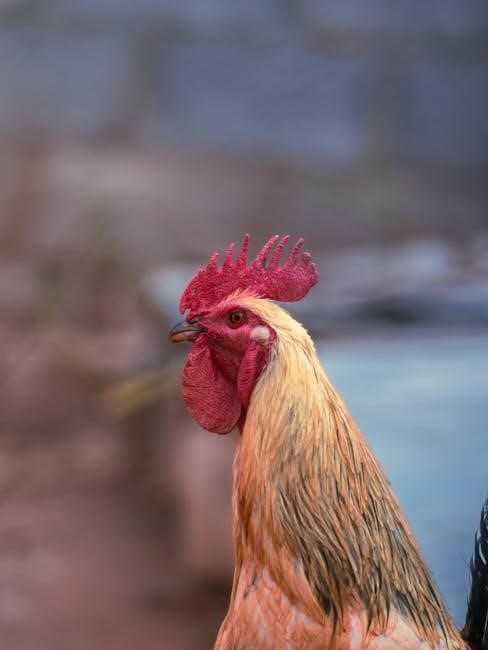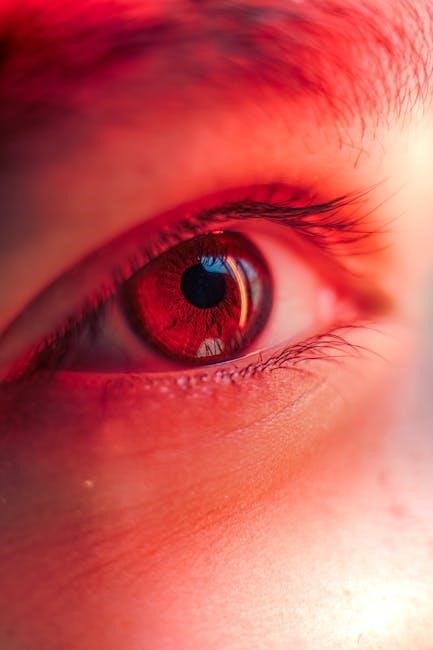Leave a Reply
You must be logged in to post a comment.
Toni Morrison’s The Bluest Eye explores themes of race, beauty, and trauma through Pecola Breedlove’s story. PDF resources offer guided notes, summaries, and analysis for deeper understanding.
Toni Morrison’s The Bluest Eye is set in Lorain, Ohio, during the 1940s, exploring themes of race, beauty, and trauma. The story centers on Pecola Breedlove, a young Black girl, and her family. PDF resources provide guided notes and summaries, highlighting the novel’s historical context and Morrison’s exploration of internalized racism. The novel examines societal beauty standards and their devastating impact on Pecola. These PDFs, available for free download, offer analysis of key themes, character relationships, and the novel’s emotional depth, aiding readers in understanding Morrison’s powerful narrative.
The Bluest Eye by Toni Morrison tells the story of Pecola Breedlove, a young Black girl in 1940s Ohio, who longs for blue eyes to achieve societal beauty standards. The novel explores her tragic life, marked by poverty, abuse, and internalized racism. Pecola’s rape by her father and the community’s failure to protect her highlight the destructive nature of racism and beauty ideals. Narrated by Claudia MacTeer, the story contrasts Pecola’s despair with Claudia’s resilience. PDF summaries and guides provide detailed analysis of these events, offering insights into Morrison’s exploration of trauma and identity.
The Bluest Eye is set in 1940s Ohio, reflecting the post-Depression era and the Great Migration’s impact on Black communities. Morrison explores systemic racism, economic inequality, and internalized oppression, shaping characters’ lives. PDF guides highlight how historical events, such as segregation and limited opportunities, influenced Pecola’s tragic fate. The novel critiques societal beauty ideals rooted in white supremacy, emphasizing their devastating effects on Black identity. Historical context underscores Morrison’s exploration of trauma, resilience, and the struggle for self-definition in a racially divided America.

Guided notes and study resources for The Bluest Eye are available in PDF format, offering summaries, analysis, and study tools to enhance understanding and academic success.
Guided notes for chapters 1-3 of The Bluest Eye provide a detailed summary of key events, character introductions, and thematic elements. Chapter 1 sets the tone with the introduction of Claudia MacTeer and her family, contrasting with the Breedloves’ struggles. Chapter 2 delves into Pecola’s home life, highlighting her father’s violence and her mother’s emotional distance. Chapter 3 explores the community’s role in perpetuating beauty standards and racism. These notes also analyze the symbolism of the doll and the seeds, offering insights into Morrison’s exploration of internalized racism and childhood trauma.
The novel explores themes of racism, beauty, and trauma, highlighting societal distortions of self-worth. Internalized racism is central, as characters degrade themselves and others due to systemic oppression. The pursuit of beauty, particularly whiteness, is critiqued through Pecola’s desire for blue eyes. Trauma, both individual and generational, shapes lives, while the loss of innocence underscores childhood vulnerabilities. Morrison examines how these themes intersect, revealing profound societal flaws and emotional tolls. The novel challenges readers to confront the destructive power of internalized biases and the beauty standards imposed by a racist culture.
The characters in The Bluest Eye are deeply interconnected, each representing unique struggles and societal influences. Pecola Breedlove embodies the tragic consequences of internalized racism and abuse, while Claudia MacTeer symbolizes resistance and childhood innocence. Frieda MacTeer’s maturity contrasts with Claudia’s naivety, highlighting sibling dynamics. Secondary characters like Cholly and Pauline Breedlove reveal the cyclical nature of trauma and the destructive power of unmet emotional needs. Through these characters, Morrison explores how societal expectations and personal histories shape identity and self-worth, offering a profound commentary on race, class, and gender.

The novel explores themes of racism, internalized racism, and the distortion of beauty standards, highlighting how societal constructs destroy self-esteem and identity, particularly in Black communities.
Toni Morrison’s The Bluest Eye portrays the devastating impact of racism and internalized racism on Black communities. The novel highlights how societal beauty standards, rooted in whiteness, lead to self-hatred and low self-worth among characters like Pecola Breedlove. Morrison illustrates how internalized racism fractures relationships and perpetuates cycles of oppression, emphasizing the psychological and emotional toll of systemic racism. The characters’ longing for white features, such as blue eyes, symbolizes their internalized desire to conform to oppressive beauty ideals, underscoring the novel’s critique of racial hierarchies and their destructive influence.
Toni Morrison explores the destructive nature of societal beauty standards in The Bluest Eye. The novel critiques the idolization of whiteness and the devaluation of Black features, as seen in Pecola Breedlove’s obsession with blue eyes. Morrison highlights how these standards are internalized, leading to self-hatred and low self-esteem among Black characters. Claudia MacTeer’s rejection of white dolls symbolizes resistance to these ideals. The novel underscores the harm caused by rigid beauty norms, emphasizing their role in perpetuating racial and gender-based oppression. Morrison challenges readers to question and dismantle these harmful constructs.
Toni Morrison examines the profound effects of trauma in The Bluest Eye, highlighting its emotional and psychological toll on characters. Pecola Breedlove’s sexual abuse by her father, Cholly, exemplifies the devastating consequences of unchecked trauma, leading to her mental breakdown. Similarly, Cholly’s own traumatic childhood shapes his destructive behavior. Morrison illustrates how unaddressed wounds perpetuate cycles of pain, affecting individuals and communities. The novel emphasizes the lasting impact of trauma, particularly in the absence of support or understanding, underscoring its role in the characters’ struggles and the broader societal issues explored in the story.

Pecola Breedlove, Claudia MacTeer, and Frieda MacTeer are central figures, each representing unique struggles and perspectives. Their experiences shape the narrative, exploring themes of identity and resilience.
Pecola Breedlove is the central protagonist, a young black girl in 1940s Ohio, whose life is marked by poverty, abuse, and internalized racism. Her deep desire for blue eyes symbolizes her longing for societal acceptance, reflecting the destructive nature of beauty standards imposed by a racist world. Pecola’s tragic journey explores themes of self-worth, trauma, and the devastating impact of systemic oppression on her psyche. Her character serves as a heart-wrenching representation of the consequences of racial and social marginalization. Morrison’s portrayal of Pecola underscores the broader struggles faced by black communities.
Claudia MacTeer is a young black girl and one of the novel’s narrators, whose family provides a relatively stable and loving environment compared to the Breedloves. Her innocence and curiosity contrast with the harsh realities of Pecola’s life. Claudia’s evolving perspective reflects her growing understanding of societal injustices and the internalized racism that affects her community. Her character serves as a foil to Pecola, highlighting the impact of family and environment on self-perception. Claudia’s journey from childhood naivety to awareness underscores the novel’s exploration of identity and resilience.


Frieda MacTeer, Claudia’s older sister, embodies a maturity and awareness that contrasts with Claudia’s innocence. Her interactions with Pecola reflect a mix of youthful curiosity and nascent empathy. Frieda’s character highlights the complexities of black girlhood, offering a perspective distinct from both Claudia and Pecola. Her role within the MacTeer family underscores themes of sibling dynamics and the varying ways girls navigate societal expectations. Frieda’s presence enriches the narrative, providing a bridge between childhood and adolescence, while her kindness toward Pecola subtly challenges the community’s harsh judgments.


Delve into critical insights and essay topics exploring themes, characters, and symbolism in “The Bluest Eye.” PDF resources offer detailed analyses and study guides for deeper understanding.
In The Bluest Eye, Toni Morrison employs rich symbolism to explore themes of identity, beauty, and trauma. The bluest eye itself symbolizes Pecola’s longing for validation and societal beauty standards. Marigolds represent the community’s failure to nurture Pecola, as their inability to bloom mirrors her dashed hopes. The house on 124 Bluestone Road symbolizes both safety and imprisonment, reflecting the characters’ entrapment in their circumstances. Candy wrappers and dandelions further emphasize the contrast between superficial allure and harsh realities. These symbols deepen the novel’s exploration of internalized racism and the destruction of innocence. PDF guides provide in-depth analyses of these motifs, enhancing understanding of Morrison’s layered narrative.
Exploring The Bluest Eye, essays can delve into themes like internalized racism, beauty standards, and trauma. Analyze Pecola’s quest for blue eyes as a metaphor for societal beauty ideals. Discuss Claudia’s resistance to these norms and her journey toward self-acceptance. Examine the community’s complicity in Pecola’s destruction. Compare the novel’s portrayal of trauma with modern discussions on mental health. Consider the historical context of 1940s America and its impact on characters. PDF guides offer prompts and sample essays, aiding students in crafting insightful analyses of Morrison’s powerful narrative.
SparkNotes and study guides for The Bluest Eye provide in-depth analyses of themes, characters, and plot. PDF versions of these guides offer detailed summaries of each chapter, helping students grasp Morrison’s complex narrative. They include character maps, theme explanations, and historical context. Study guides often feature discussion questions and essay prompts, enabling deeper exploration of the novel. Online resources also offer quizzes to test comprehension. These tools are invaluable for understanding the novel’s dense themes and language, making them essential for students seeking to analyze Morrison’s work effectively.

PDF resources for The Bluest Eye include downloadable study guides, summaries, and analysis tools. These materials enhance comprehension and provide a comprehensive breakdown of the novel.
PDF study guides for The Bluest Eye are widely available online, offering in-depth analysis, summaries, and discussion questions. Platforms like SparkNotes, LitCharts, and educational websites provide downloadable resources. These guides are designed to enhance understanding of the novel’s themes, characters, and historical context. Students can easily access these materials, print them, or save them for offline use. Utilizing these PDF resources can significantly aid in studying and preparing for exams or discussions. Ensure to download from reputable sources for accurate and comprehensive content.
Searchable PDF tools enhance your study experience by allowing quick access to specific content within study guides for The Bluest Eye. Tools like Adobe Acrobat Reader or online platforms enable keyword searches, making it easy to locate themes, characters, or quotes. Features such as bookmarks, annotations, and highlighting help organize notes. These tools are especially useful for analyzing complex texts, enabling efficient navigation and deeper understanding. By utilizing searchable PDFs, students can focus on key sections, streamlining their study process and improving retention of critical information.
Advanced search operators enhance your ability to find specific content within PDFs of The Bluest Eye. Use quotes for exact phrases, such as “internalized racism,” to locate precise discussions. The site: operator limits searches to specific domains, while filetype:pdf targets PDFs exclusively. Boolean operators like AND, OR, and NOT refine results further. Employing these tools streamlines your research, saving time and ensuring you access relevant sections quickly. This approach is invaluable for in-depth analysis of themes, characters, and critical essays within the novel’s study materials.

Engage your book club with thought-provoking questions about The Bluest Eye. How does Pecola’s desire for blue eyes reflect societal beauty standards? What role does Claudia play in contrasting Pecola’s experiences? How does Morrison portray the impact of trauma on individuals and families? Discuss the significance of the novel’s title and its connection to Pecola’s fate. How does the author use the Breedlove family to explore themes of poverty and marginalization? What message do you think Morrison conveys about racial identity and self-worth? Use these questions to deepen your understanding of the novel’s complex themes.
Explore the themes of The Bluest Eye with questions that delve into its core ideas. How does internalized racism shape the characters’ lives? What role does beauty play in Pecola’s identity? How does Morrison depict the cyclical nature of trauma? What does the novel reveal about societal expectations of Black women? How does the concept of family fail or support the characters? What does the title symbolize about societal beauty standards? These questions invite a deeper analysis of Morrison’s exploration of race, identity, and human frailty, encouraging readers to reflect on the novel’s profound messages.
The Bluest Eye remains a powerful exploration of racism, beauty, and trauma. This PDF guide offers essential insights, fostering a deeper understanding and appreciation of Morrison’s work.
The Bluest Eye is a haunting exploration of internalized racism, beauty standards, and trauma. Morrison’s vivid prose and poignant storytelling create a powerful narrative that lingers long after the final page. The novel’s unflinching portrayal of societal injustices and personal struggles resonates deeply, making it a critical work in understanding the Black experience in America. Its themes remain relevant today, ensuring its continued impact and importance in literary studies. This PDF resource provides a comprehensive guide to unpacking the novel’s complexities and significance.
Study materials, such as PDF guides, are essential for deeply understanding The Bluest Eye. They provide summaries, analyses, and discussion questions that help students grasp the novel’s complex themes and historical context. These resources offer insights into Morrison’s writing style and the cultural significance of the narrative. By breaking down key scenes and characters, study materials make the novel more accessible, enabling readers to engage with its profound messages about identity, racism, and beauty. They are invaluable tools for both classroom discussions and independent study, fostering a richer appreciation of the text.
Exploring The Bluest Eye beyond the classroom fosters a deeper understanding of its themes and cultural impact. Readers are encouraged to seek out additional resources, such as scholarly articles or essays, to gain new perspectives on Morrison’s work. Engaging with online forums or book clubs can also enrich your interpretation of the novel. Supplementing your study with related texts or critical analyses will provide a more comprehensive view of the story’s significance. Embrace curiosity and dive into the wealth of materials available to enhance your appreciation of this profound literary work.
You must be logged in to post a comment.